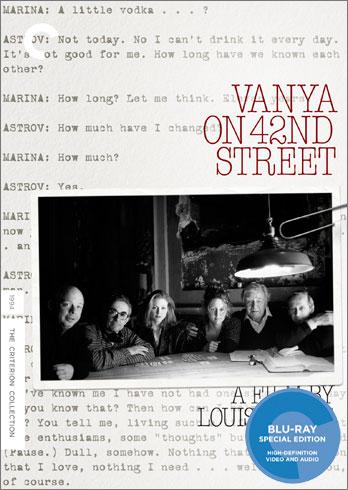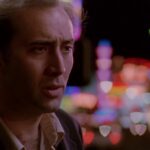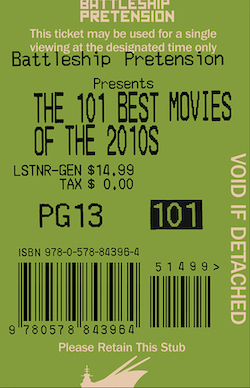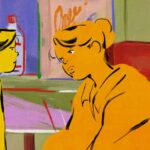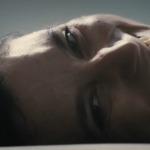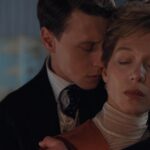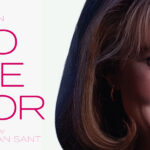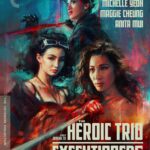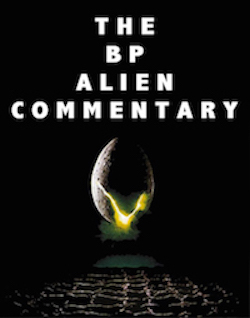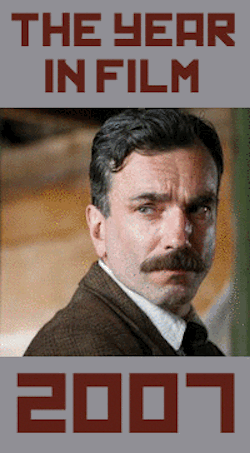Home Video Hovel- Vanya on 42nd Street, by Tyler Smith
In many ways, art is about accountability. An artist looks at the world around him and holds it accountable for what it is, with a keen eye on what it perhaps should be. In the world of theatre, the director is accountable to the writer, ensuring that his vision gets across, while putting his own personal mark on it. The actors are accountable to the director, whose particular vision for the characters is the final word. And, of course, all of these people are accountable to the audience, whose patience for self indulgence is usually pretty short. But the audience itself is also accountable to the work of art, which sometimes holds up a mirror and says, “This is where you live, now what are you going to do about it?” There are a number of unspoken bonds between the various artists, the audience, and the art that can be both exciting and nerve wracking.
Now imagine that the whole structure were broken down. The director feels no sense of real responsibility to the writer and requires absolutely nothing specific from his actors. And there is no audience accountability because there simply isn’t one. This is the situation that we find in Louis Malle’s Vanya on 42nd Street, a unique little film from the early 90s that I found absolutely invigorating to watch.
Theatre director Andre Gregory put together a troupe of actors to perform Anton Chekhov’s Uncle Vanya, an ensemble piece of deceptive simplicity. The play was originally written in 1897, so Gregory turned to playwright David Mamet to update it. Once satisfied with Mamet’s adaptation, Gregory called upon his actors to memorize their lines before they ever had a rehearsal. This is highly unusual, as actors often like to infuse their lines with the emotion that comes out of the rehearsal process. But this production would by no means be common.
In fact, there would be no real production at all. There would be no set, no costumes. Only some minor staging and a few props. The rehearsals would go on, with each performance just a little different than the last. The actors were encouraged to take risks. Sometimes they would deny their instincts entirely, while at other times it would be suggested that they act completely from their instincts and leave their intellect at the door. There were performances that were fun and exciting and others that were melancholy and depressing, often based on the mood of the performers, which Gregory insisted the actors incorporate into their performances.
There was never meant to be an audience. This was only ever going to be an exercise in which the actors and director would able to dig further and further into their own emotions and organic instincts without the judging eyes of a spectators. And by bucking this essential staple of the artistic process, the artists were able to explore their craft in a way that very few are able.
After a certain point, a small audience of invited loved ones (only two per performer) was allowed in. There was talk amongst New York actors and directors about this strange little production and it quickly became a hot ticket item. But, of course, you were only able to see it if you were invited. In an environment of love, acceptance, and non-judgment, it was all important that the audience be supportive above all.
Enter Louis Malle, who started working with Gregory on a film adaptation. The film would be a documentary of sorts, but also a surprisingly straightforward filming of a classic play.
Out of all of this comes Vanya on 42nd Street, a film that begins with the actors out on the street converging on a rundown theater. They drink coffee and have casual conversations. They discuss how tired they are and laugh at each other’s jokes. Some of their conversations seem to have a surprising depth. By the time we realize that the play has started, we’re halfway through the opening scene. So modern is David Mamet’s adaptation and so relaxed are the performers that we hardly even recognize that a performance is happening.
But it is happening. The actors are saying their lines and hitting their marks, but there’s something much deeper here. Each individual performance seems surprisingly personal to the actor playing the part. And as we see the actors interact with one another, we feel less like we’re watching a classic piece being performed than a group of friends talk about their day and mood. And, in a way, they are. They’re using Chekhov’s words, but they’re also communicating non-verbally both as characters and as actors. We sense that actor Larry Pine may not be having the best day, but is putting on a brave face. Why do we sense that? Because his character, Dr. Astrov, is conveying that. There is no separation between the two.
There must be something incredibly frustrating and relieving about having a director that won’t tell you if you’re doing something wrong. An actor needs guidance, right? Not here. In this production, the only guidance an actor will get is from himself, the character, and the other actors on the stage. It’s no wonder that this feels like a real, honest-t0-God family that we’re watching.
Perhaps this is why, in the comprehensive featurette on the new Criterion Blu Ray, the cast speaks in almost hushed tones about this whole experience. Not unlike veterans that talk about war. It was a harrowing experience, in which all manner of personal vulnerabilities were on display to the other actors. To think back on that kind of freedom appears to be both exciting and vaguely frightening.
It is that combination of fear and excitement, of instinct and intellect, that makes Vanya on 42nd Street such a fascinating film. You just don’t see that kind of acting very often, if ever. And that was with a small audience and the camera rolling. My imagination runs wild when I think about how raw the performances must have been with absolutely no audience and no camera.
I wish I could go back and see it for myself, live. But, of course, that’s impossible. It’s like trying to see yourself in the mirror with your eyes closed. The very fact of what you’re trying to do guarantees that you’ll never be able to do it. The only audience that ever got to see the production in its purest form was made up of those that were involved. It is an experience that only the members of the cast and their director can ever truly own. How I envy them.

